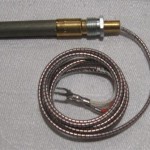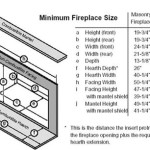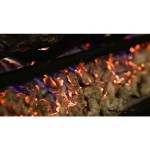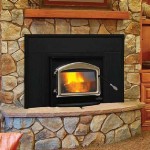```html
The Custom Fireplace: Oakwood's Timeless Charm
The custom fireplace, particularly one crafted with oakwood, represents more than just a source of heat; it embodies a focal point that blends functionality with aesthetic appeal. The selection of materials and the intricacy of design profoundly impact a home's ambiance, and oakwood, with its inherent durability and visual warmth, stands as a popular choice for fireplace construction and detailing. Understanding the nuances of oakwood, its application in fireplace design, and the considerations involved in installation and maintenance are crucial for homeowners seeking to integrate this classic element into their living spaces. This article will delve into the qualities of oakwood that make it suitable for custom fireplaces, exploring design considerations and providing insights into ensuring long-term performance.
Oakwood: A Material of Enduring Quality
Oakwood's long-standing reputation stems from its robust physical properties. It is a hardwood, characterized by its density and resistance to wear and tear. This inherent strength allows it to withstand the rigors of daily use, making it a reliable material for fireplace surrounds, mantels, and other structural components. The closed grain structure of oak also contributes to its durability, offering resistance to moisture absorption and minimizing the risk of warping or cracking over time.
Beyond its physical resilience, oakwood offers a captivating aesthetic. Its distinctive grain patterns, ranging from subtle to prominent, add visual interest and character to any fireplace design. The natural color of oak, typically a warm golden hue, can be further amplified or subdued through staining and finishing techniques. This versatility allows oak to seamlessly integrate into a variety of interior design styles, from rustic and traditional to contemporary and minimalist.
The availability of oakwood in various grades and species further enhances its appeal. Red oak, known for its reddish tint and more pronounced grain, offers a bolder visual statement. White oak, with its lighter color and finer grain, provides a more subtle and refined aesthetic. The choice between these species, along with the selected grade of lumber, allows homeowners to tailor the appearance of their custom fireplace to their specific preferences.
Design Considerations for Oakwood Fireplaces
The design of a custom oakwood fireplace requires careful consideration of several factors, including the overall architectural style of the home, the desired functionality of the fireplace, and the specific characteristics of the chosen oakwood material. Integrating the fireplace seamlessly into the existing space is paramount, ensuring that it complements, rather than clashes with, the surrounding décor.
One key consideration is the scale and proportion of the fireplace. A large, imposing fireplace may overwhelm a small room, while a diminutive fireplace may appear insignificant in a larger space. Determining the appropriate size requires careful measurement and an understanding of spatial relationships. The height of the mantel, the width of the surround, and the depth of the firebox all contribute to the overall visual impact of the fireplace.
The style of the fireplace should also align with the homeowner's aesthetic preferences. A traditional oakwood fireplace may feature ornate carvings, fluted columns, and a detailed mantelpiece. A contemporary design, on the other hand, may prioritize clean lines, minimalist detailing, and a focus on the natural beauty of the wood. The choice of hardware, such as fireplace doors and grates, should also complement the overall design style.
Furthermore, the functionality of the fireplace should be carefully considered. If the fireplace is intended for regular use, the design should incorporate features such as a properly sized firebox, a functioning damper, and adequate ventilation. For purely decorative fireplaces, the design may focus more on aesthetic appeal, incorporating features such as faux flames or decorative accents.
Installation and Maintenance of Oakwood Fireplaces
Proper installation is crucial to ensure the safe and efficient operation of a custom oakwood fireplace. The installation process typically involves several steps, including framing the firebox, installing the flue, and constructing the surround and mantel. It is essential to engage qualified professionals with experience in fireplace installation to ensure that all components are properly installed and that the fireplace complies with local building codes.
The installation process should also take into account the specific characteristics of the chosen oakwood material. Proper sealing and finishing techniques are essential to protect the wood from moisture and heat damage. The use of fire-resistant materials in the construction of the surround is also critical to prevent the spread of fire. A well-ventilated firebox is crucial for efficient combustion and to prevent the buildup of dangerous gases.
Regular maintenance is essential to prolong the lifespan and maintain the aesthetic appeal of an oakwood fireplace. Cleaning the fireplace regularly to remove soot and debris is important to prevent the buildup of flammable materials. Inspecting the chimney and flue for blockages or damage is also crucial to ensure proper ventilation and prevent the risk of carbon monoxide poisoning.
The oakwood itself may require periodic maintenance to preserve its beauty. Dusting the wood regularly with a soft cloth is important to remove surface dirt and grime. Applying a wood polish or sealant can help to protect the wood from scratches and stains. If the wood becomes damaged or stained, it may be necessary to refinish or repair it. Consult with a qualified woodworker or furniture restorer for guidance on the best methods for maintaining the appearance of the oakwood.
Beyond these practical considerations, the placement of the oakwood fireplace can be used strategically to influence the perceived temperature and atmosphere of the room. Placing the fireplace along an interior wall can help distribute heat more evenly throughout the space. Alternatively, placing the fireplace near a window can create a cozy and inviting atmosphere, particularly during colder months. The selection of appropriate accessories, such as fireplace screens, tool sets, and decorative logs, can further enhance the aesthetic appeal of the custom oakwood fireplace and create a welcoming and comfortable environment.
In conclusion, the allure of a custom oakwood fireplace lies in its blend of timeless design and inherent durability. By carefully considering the qualities of oakwood, thoughtfully designing its integration into the home, and diligently maintaining its condition, homeowners can enjoy the warmth and beauty of a well-crafted oakwood fireplace for years to come. The combination of aesthetic appeal and functional design ensures that the custom oakwood fireplace remains a cherished focal point, enhancing the value and ambiance of the home.
```
Amish Handcrafted Mission Electric Fireplace Usa

Oakwood Homes Fireplaces Contemporary Family Room Denver By Houzz

Harman Wood Stove Oakwood

Oakwood Homes Fireplaces Contemporary Family Room Denver By Houzz

Rustic Fireplace Mantel Shelf Custom Made

Harman Oakwood Wood Stove Traditional Living Room Dc Metro By Mace Energy Supply Houzz

Testimonials

Oakwood Homes Fireplaces Contemporary Family Room Denver By Houzz

Design Homes Luxury Home

Custom Fireplace Design Stamford Fireplaces
Related Posts








